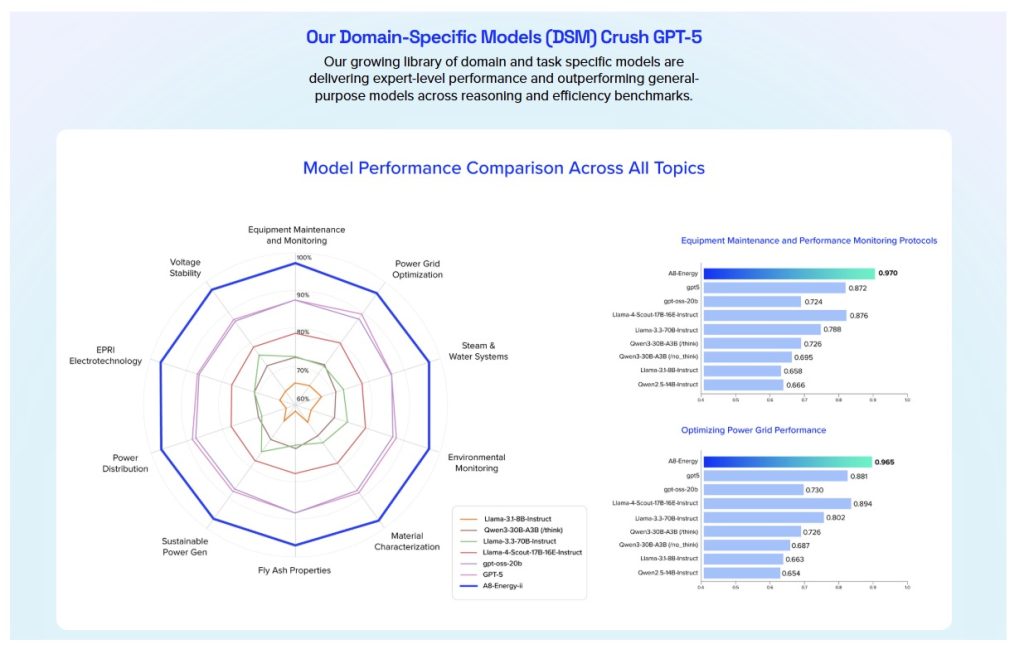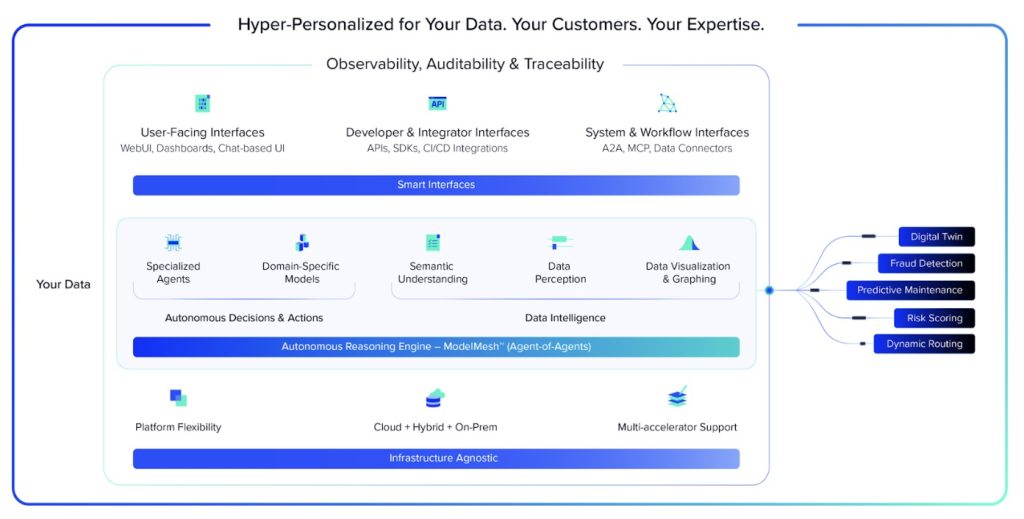Articul8 AI is an enterprise software company focused on generative artificial intelligence (GenAI) solutions for large, complex organizations. Pulse 2.0 interviewed Articul8 founder and CEO Arun Subramaniyan to gain a deeper understanding of the company.
Arun Subramaniyan’s Background

Could you tell me more about your background? Subramaniyan said:
“I began my career as an aerospace engineer designing jet engines and rocket systems, work that demanded high precision, deep technical expertise, and large-scale data analysis. That foundation naturally led me into high-performance computing and probabilistic modeling, well before AI entered the mainstream.”
“I later joined Amazon and helped build and scale the company’s HPC workloads, including several firsts: enabling the COVID-19 simulations that led to California’s first lockdown (eventually scaled to over 50 countries via the UN), deploying the first Top500 supercomputer in a public cloud (ranked 39th globally in 2021), and powering the earliest large-scale GPU clusters for what are now some of the biggest names in AI.”
“That experience brought me to Intel, where I was asked to build a new cloud and AI software business. What began as an internal initiative to demonstrate the power of Intel’s accelerators evolved into a full-stack GenAI platform for complex enterprise problems, and ultimately, the launch of Articul8 as an independent company.”
Formation Of The Company
How did the idea for the company come together? Subramaniyan shared:
“At Amazon, I helped build one of the fastest-growing businesses to hit $1B ARR by leaning into the early wave of GenAI demand. With that experience, I joined Intel to build its AI Supercomputer and the full software stack needed to build, deploy, and manage large language models. In late 2022, a month before ChatGPT launched, my team and I delivered a domain-specific GenAI model to a customer that dramatically exceeded expectations. Fun fact: we had code-named the project “LLaMa,” nine months before Meta released theirs.”
“Although our goal was to showcase the power of Intel’s accelerators, the customer came back asking to license the software itself. That moment was the turning point. It was clear the software was the real differentiator — and that enterprises were missing a purpose-built, production-grade GenAI platform tailored for regulated, high-stakes environments.”
“I built the business case and secured funding from Intel Capital, DigitalBridge, and others to spin the effort out as an independent company. That’s how Articul8 launched in January 2024.”
Favorite Memory
What has been your favorite memory working for the company so far? Subramaniyan reflected:
“Watching our team of engineers and domain experts take a customer’s data, thousands of documents, spanning decades, and turn it into a usable knowledge base with full traceability in under 12 hours. That was a real moment of pride because it validated the platform and showed what’s possible when you put the right architecture, models, people, and compute together.”
Core Products
What are the company’s core products and features? Subramaniyan explained:
“Our core product is the Domain-Specific GenAI Platform, built from the ground up for complex enterprise missions, autonomously executed with trusted, hyper-personalized outcomes. At the heart of it is ModelMesh™ — our proprietary reasoning engine designed to drive autonomous decisioning and actioning across a system of agents and models.”
“ModelMesh™ acts as an Agent-of-Agents. It intelligently selects and orchestrates the right data and the right combination of models and agents, including domain-specific, general-purpose, and non-LLMs, without relying on predefined rules. It’s massively parallel and context-aware, enabling our customers to optimize for multiple KPIs, reduce manual intervention, and deliver precise, explainable outcomes at scale.”
“We pair this with domain-specific models (DSMs) we’ve trained in collaboration with industry leaders like EPRI and NVIDIA. When combined with a customer’s own data, these models outperform general-purpose LLMs by orders of magnitude in accuracy, depth, and contextual understanding.”
“Everything we’ve built is designed to meet enterprise needs: secure deployment within the customer’s environment, full auditability and observability, and native support for multimodal inputs, from text and tables to diagrams and images. We’re not just building GenAI — we’re building GenAI that enterprises can trust.”


Challenges Faced
Have you faced any challenges in your sector of work recently? Subramaniyan acknowledged:
“One of the biggest challenges we’ve faced is cutting through the noise. GenAI has been heavily hyped, and nearly every startup and large company claims to do the same thing — which naturally breeds skepticism, especially among enterprise buyers in regulated industries.”
“What’s helped us break through is simple: we let the product speak for itself. When we show customers how our platform reasons through complex, domain-specific questions using their own proprietary data, and consistently outperforms general-purpose models, trust builds fast. General LLMs all trained on the same publicly available data start to sound the same. In this environment, uniqueness stands out, whether the differentiation of an enterprise or the distinctiveness of an individual. Demonstrating real value in real environments has been our biggest unlock.”
Evolution Of The Company’s Technology
How has the company’s technology evolved since launching? Subramaniyan noted:
“We’ve expanded beyond a platform for building DSMs to a full enterprise GenAI stack — from ingestion and data perception to orchestration and hyper-personalized outcome generation. Our platform now supports Google’s Agent-to-Agent (A2A) interoperability protocol and the Model Context Protocol (MCP), enabling agent-based collaboration across systems. We’ve also layered in support for customer-defined access controls and governance, so GenAI can function securely within complex organizations.”
Significant Milestones
What have been some of the company’s most significant milestones? Subramaniyan cited:
“We’ve launched several domain-specific models – in energy, aerospace, and semiconductors – that have outperformed state-of-the-art models, including GPT-5, across multiple clusters and technical benchmarks. In fact, our A8-Energy DSM achieved 96.9% accuracy across ten specialized regulatory and infrastructure topics, compared to GPT-OSS-20B’s 71.3%, proving the value of domain-specific reasoning over scale. We’ve been named the foundational GenAI provider for Electric Power Research Institute (EPRI), selected as a launch partner for Google’s Agent-to-Agent (A2A) interoperability protocol, and integrated our platform into real production environments with multiple Fortune 100 customers.”
“Our Applied Research team was also recognized at NeurIPS 2025, where our paper DocQIR: Emb: Document Image Retrieval with Multilingual Question Query was accepted. The work demonstrated 40% higher multilingual document image retrieval accuracy than state-of-the-art models, showing how our data perception layer unlocks complex visual and tabular insights, a core part of how we help enterprises understand the true shape of their data.
“We’ve also released agents on the AWS Marketplace, Weave (Network Topology) and LLM-IQ, extending our platform’s reach to developers and enterprise teams globally.. Powered by ModelMesh™, our full-stack GenAI platform gives teams a fast, traceable, high-precision path to results without the overhead of building custom applications. It’s already gaining strong traction in financial services, manufacturing, and beyond.”
Customer Success Stories
Can you share any specific customer success stories? Subramaniyan highlighted:
“One of our most impactful deployments that we can talk publicly about has been with Intel, where we helped transform their semiconductor manufacturing operations using our GenAI platform. Chip fabrication is a highly complex process where even brief equipment downtime can cost millions. Diagnosing failures quickly requires sifting through decades of unstructured machine logs, knowledge articles, sensor data, and internal wikis — a task that historically depended on tribal knowledge and manual effort.”
“With Articul8, Intel created a GenAI-powered manufacturing incident assistant that ingests, reasons over, and learns from diverse data types — structured and unstructured, real-time and historical. Engineers and technicians now use a natural language interface to perform rapid root cause analysis, accelerate incident resolution, and automatically generate work orders. This solution has saved Intel thousands of engineering hours, significantly reduced fab downtime, and delivered measurable gains in manufacturing efficiency — a true example of GenAI driving frontline operational impact.”
Funding
When asking Subramaniyan about the company’s funding details, he revealed:
“We raised our Series A in January 2024, led by DigitalBridge with participation from Intel Capital and other strategic investors. While we’re not sharing exact revenue figures at this time, we’ve crossed eight figures and are seeing strong momentum with multiple Fortune 100 customers. Adoption has been especially strong in sectors like financial services, energy, and manufacturing — areas where precision, trust, and domain expertise matter most.”
Total Addressable Market
What total addressable market (TAM) size is the company pursuing? Subramaniyan assessed:
“We’re focused on regulated industries where traditional AI has struggled — energy, manufacturing, and semiconductors. Combined, that’s a multi-hundred-billion-dollar opportunity. But more importantly, it’s where trust, traceability, and accuracy are non-negotiable.”
Differentiation From The Competition
What differentiates the company from its competition? Subramaniyan affirmed:
“We’re neither a model company, nor a chatbot company. We’re building reasoning systems that operate at scale inside enterprise environments. Our approach is multi-model, multi-modal, and platform agnostic – designed for integration into core systems of record – not just engagement layers. We go where other platforms can’t because we’re secure, flexible, and domain-tuned from the ground up.”
Future Company Goals
What are some of the company’s future goals? Subramaniyan emphasized:
“We’re focused on expanding our Domain-Specific Model library, deepening our agentic capabilities, and continuing to foster our partnerships with leaders like Amazon, NVIDIA and Google. Our aim is to bring reasoning-based GenAI to every enterprise system that demands accuracy and accountability.
We’re also scaling globally, particularly across Asia, Europe and Latin America, where demand for secure, domain-specific GenAI is accelerating. The goal is simple: help enterprises move from experimenting with AI to operationalizing it responsibly at scale.
Additional Thoughts
Any other topics you would like to discuss? Subramaniyan concluded:
“One thing I feel strongly about is the importance of leading by example — not just with our customers, but internally as well. At Articul8, we’re not just building GenAI solutions for others. We’re actively transforming how our own teams operate across engineering, product, marketing, and beyond. We have enabled every function to fundamentally rethink how they work and to embed GenAI into their day-to-day processes, achieving a significant boost in productivity and freeing up our teams to do deep work.”
“This isn’t about tools — it’s about mindset. We’re pushing our teams to develop fluency in AI-driven workflows because I want every person at Articul8 to walk away with skills that will keep them competitive in an AI-driven world. The pace of change is faster than anything we’ve seen, and I feel a deep responsibility to ensure our people are equipped to thrive — not just here, but wherever the future takes them.”


